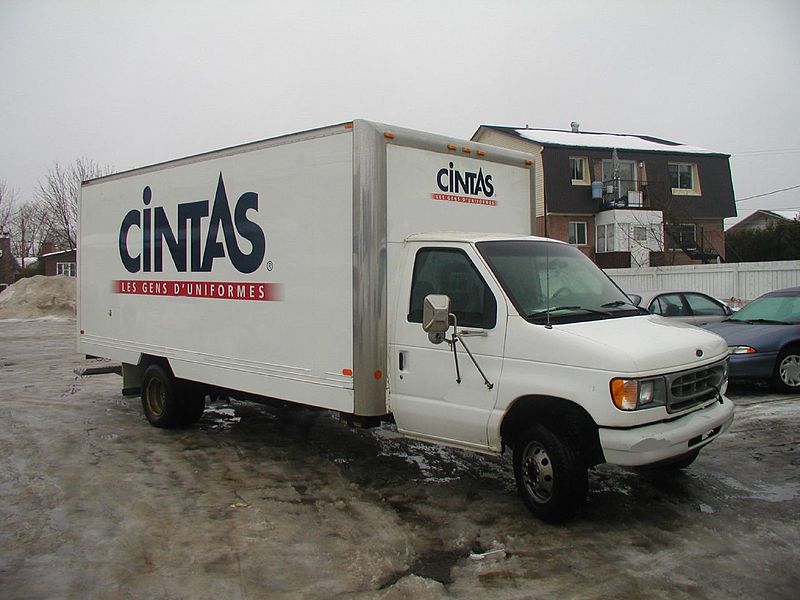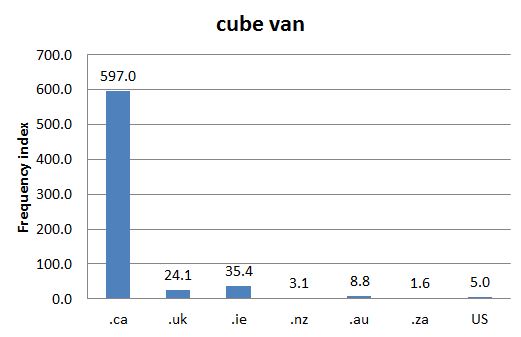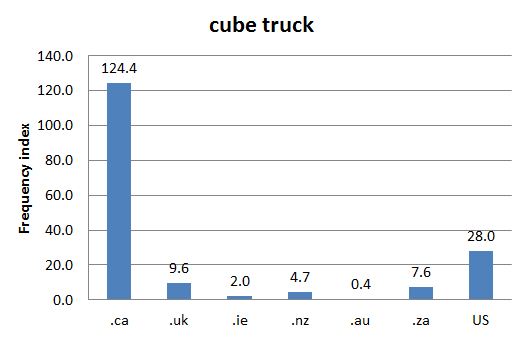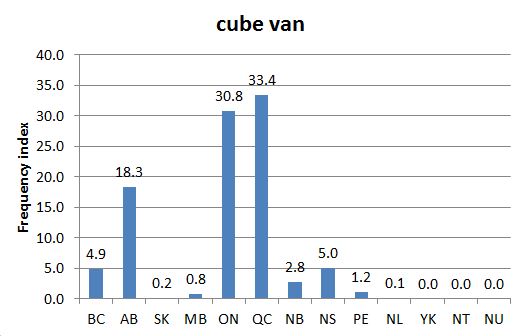DCHP-2
cube van cube-van, cube truck, cube-truck DCHP-2 (October 2016)
n. — especially Ontario & Quebec, Automotive
a mid-sized truck whose cargo area is cube-shaped (see Image 1); moving truck or delivery van.
Type: 5. Frequency — Identified as Canadianisms in COD-2, the terms cube van and cube truck are Canadianisms by frequency (see Charts 1 and 2). Cube van is the more frequent variant. They are examples of Canadianisms of a general nature, perhaps best called urban Canadianisms, that have no connection to Canadian administration or history (see Boberg 2005 for others). In the area of car terminology, cube van and cube truck seem to represent independent Canadian developments that go against the trend for automobile terms to pattern with US terms, e.g. trunk (not BrE boot), hood (not BrE bonnet), gas (not BrE petrol), muffler (not BrE silencer) (Avis 1978a: 3). The compound nouns cube van and cube truck, and their spelling variants, are fairly recent developments (see the 1984 quotation). In newspapers, the term is used nationally (BCE 2006--), with quotations from all major dialect regions of the country, including Newfoundland (see the 2007 quotation) and the Northwest Territories (see the 2006 quotation). However, as Chart 3 shows for cube van, the terms are more frequently used in Quebec and Ontario, which suggests a Central Canadian origin that has been spreading from these areas along the east-west dimension (see, e.g., the 2016 quotation from BC). For similar east-west movements of a linguistic form, in this case phonetic features, see Hung, Davis and Chambers (1993).- This is recent term that appears to be actively spreading across Canada, but not into the US. It is the reverse example of chesterfield, which is a dying Canadianism. For another example and its detailed description, see Dollinger (2015c: 99-104).
Images:

Image 1: A cube truck or cube van. Source: Wikipedia Commons. Photo: Mind meal
Chart 1: Internet Domain Search, 13 Jul. 2012
Chart 2: Internet Domain Search, 13 Jul. 2012
Chart 3: Regional Internet Domain Search, 30 Aug. 2012


